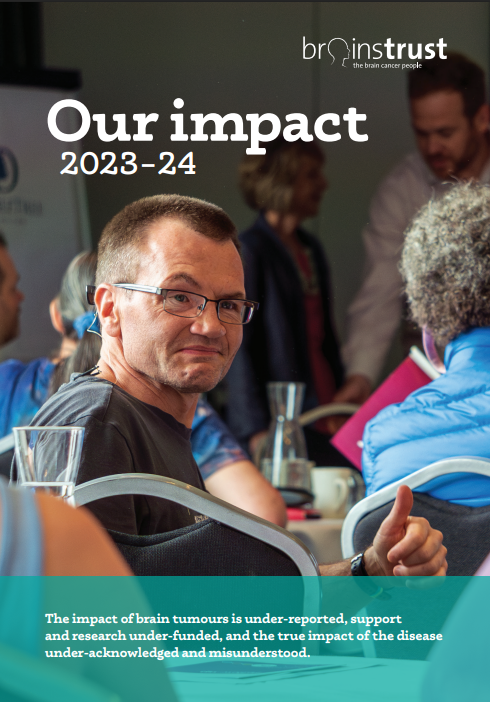New data shows that the proportion of people receiving a brain tumour diagnosis following emergency admission is decreasing, whilst diagnosis following a GP referral is up.

Charts – Health Data Insight CIC, 17th January 2018, http://data.healthdatainsight.org.uk/apps/routes_to_diagnosis/
Data – Public Health England’s National Cancer Registration and Analysis Service (NCRAS)
This is encouraging news, as whilst this may not have any impact on survival (in fact it may create a lead time-bias,) we do know that effective diagnosis following a visit to a GP can have a dramatic and positive impact on quality of life, with patients and caregivers able to manage symptoms and be proactive in managing life with a brain tumour. Linda, from Yorkshire, tells us her story,
“My journey started with headaches and culminated in finding out I had a meningioma brain tumour! If I had been sent for a CT scan promptly I wouldn’t have to go 2 years of feeling sick everyday with a constant headache. I am only 1 person, but an earlier diagnosis could have saved me years of feeling ill and not knowing why”
brainstrust is collaborating with charities, researchers, patients, carers and the clinical community to understand the impact of routes and time to diagnosis. The goal is to develop studies and improve practice so that people with a brain tumour are diagnosed as quickly as possible in the most effective way. You can read more about the ‘early diagnosis incubator day’ here.
Early diagnosis is one of the top 10 priorities for brain tumour research as identified by the James Lind Alliance priority setting partnership.
Helen Bulbeck founded brainstrust when her daughter Meg was diagnosed with a brain tumour, and is now Director of Services and Policy at the Charity. She says, “This is small, but encouraging news for our communtiy, representing a good direction of travel. It is of course part of a much much larger litany of challenges for the care system, who will still be reeling from their own findings that only 26% of people with a brain tumour received a care plan; 42% said they felt their clinical team worked together all of the time to give the best possible care; just 40% felt supported by their GP; 42% felt happy with the provision of care and support post treatment and only 63% were happy with how their results were communicated to them. We all know that this is a challenging time for the NHS, and we must all work together to prioritise what is important for patients. Rapid, and effective diagnosis should be on that list – no doctor wishes to miss, or misdiagnose a brain tumour.”
What has been your experience of diagnosis, and care before and after hearing about your brain tumour? We’d love to hear from you at hello@brainstrust.org.uk
- You can read the story behind this decade’s worth of information, and see the data from Public Health Englands National Cancer Registration and Analysis Service here:
- Health Data Insight have developed tools to help you visualise the data here:
http://data.healthdatainsight.org.uk/apps/routes_to_diagnosis/









